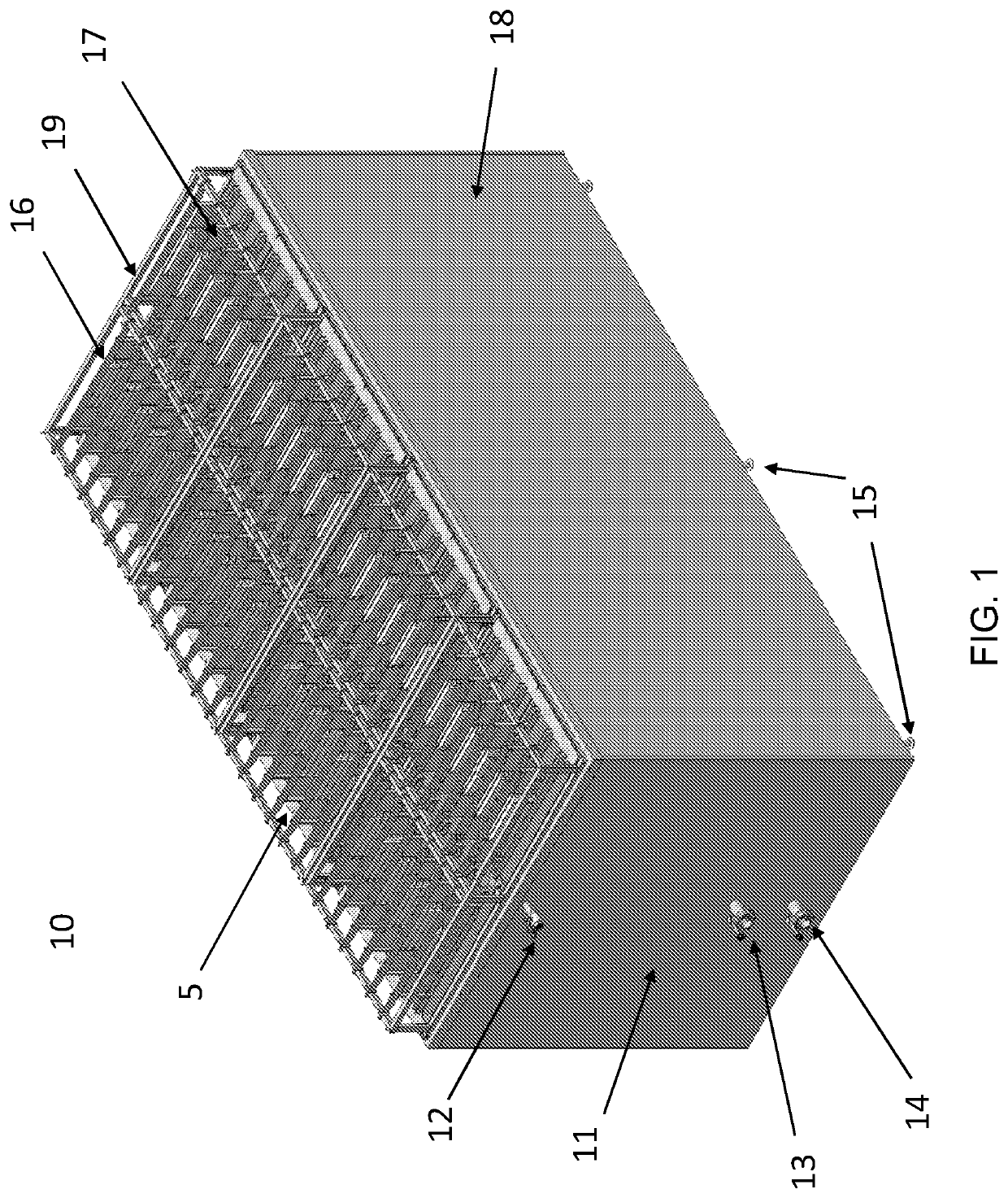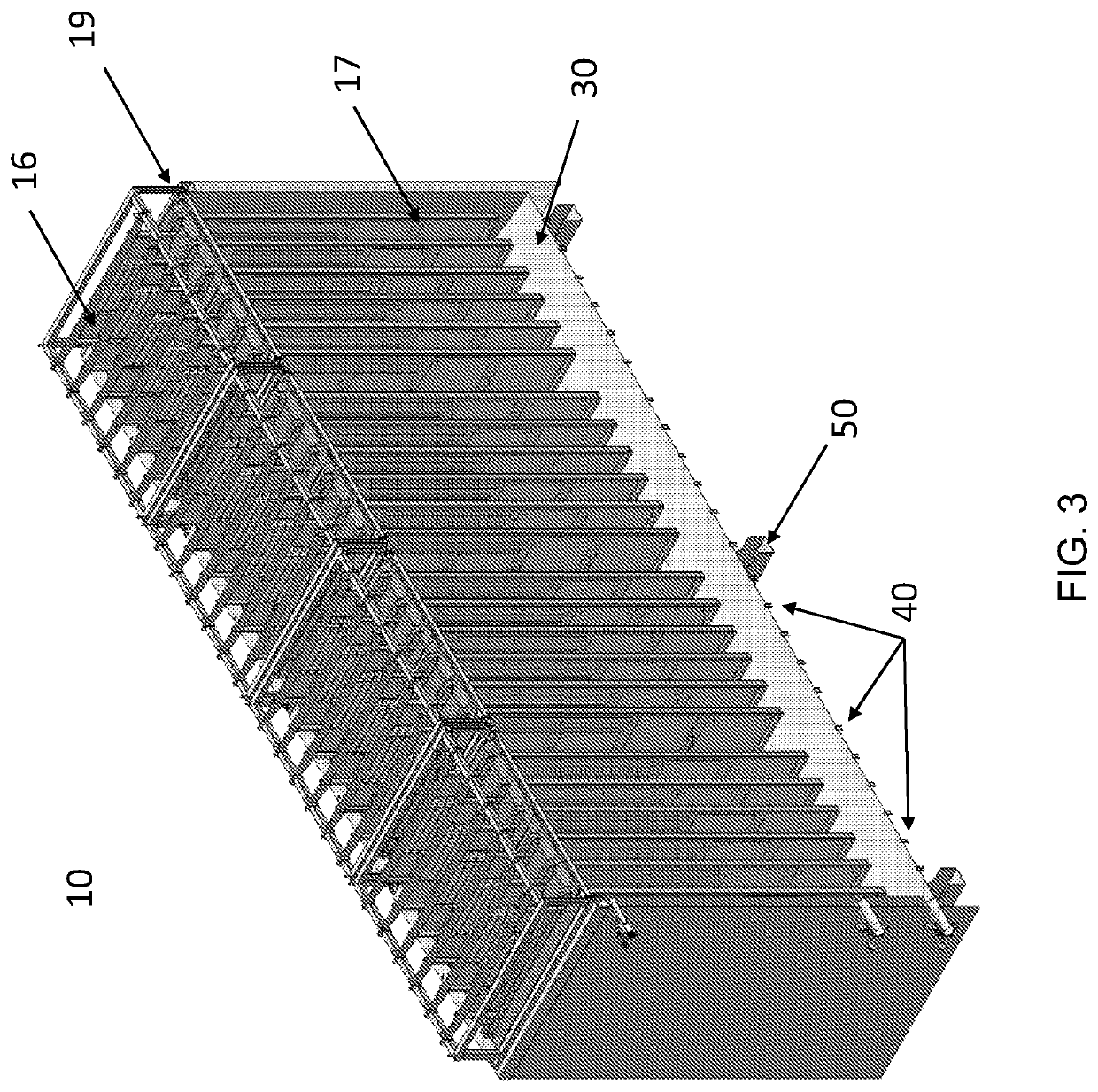Culture tank
a technology of microorganisms and tanks, applied in biochemical equipment and processes, specific use bioreactors/fermenters, biomass after-treatment, etc., can solve the problems of low investment in floor space, poor areal productivity performance of raceway ponds, and inability to choose tubular photobioreactors. to achieve the effect of minimizing the evaporation of the tank
- Summary
- Abstract
- Description
- Claims
- Application Information
AI Technical Summary
Benefits of technology
Problems solved by technology
Method used
Image
Examples
example 2
Cultivation of Marine Algae
[0292]Marine algae can in general be cultivated using the photobioreactors in accordance with the present invention. Culturing can in general terms follow the culturing described in the above under Example 1.
[0293]In the case of culturing marine microalgae such as Nannochloropsis oculata in the tank for oil production, in a similar way the up-scaling of inoculum from flask cultures involves step-up culturing of the alga in liters of seawater or seawater equivalent to tenths of liters under aseptic conditions supplied with an appropriate nutrient solution such as “f / 2 medium” (Andersen, R. A., Morton, S. L., and Sexton, J. P. 1997. Provasoli-Guillard National Center for Culture of Marine Phytoplankton 1997 list of strains. J. Phycol. 33 (suppl.):1-75). The flask cultures are transferred to an inoculum PBR and cultivated for about one week until the desired cell density is achieved. The inoculum is then transferred to the production tank managed in a simila...
PUM
| Property | Measurement | Unit |
|---|---|---|
| angle | aaaaa | aaaaa |
| internal volume | aaaaa | aaaaa |
| length | aaaaa | aaaaa |
Abstract
Description
Claims
Application Information
 Login to View More
Login to View More - R&D
- Intellectual Property
- Life Sciences
- Materials
- Tech Scout
- Unparalleled Data Quality
- Higher Quality Content
- 60% Fewer Hallucinations
Browse by: Latest US Patents, China's latest patents, Technical Efficacy Thesaurus, Application Domain, Technology Topic, Popular Technical Reports.
© 2025 PatSnap. All rights reserved.Legal|Privacy policy|Modern Slavery Act Transparency Statement|Sitemap|About US| Contact US: help@patsnap.com



